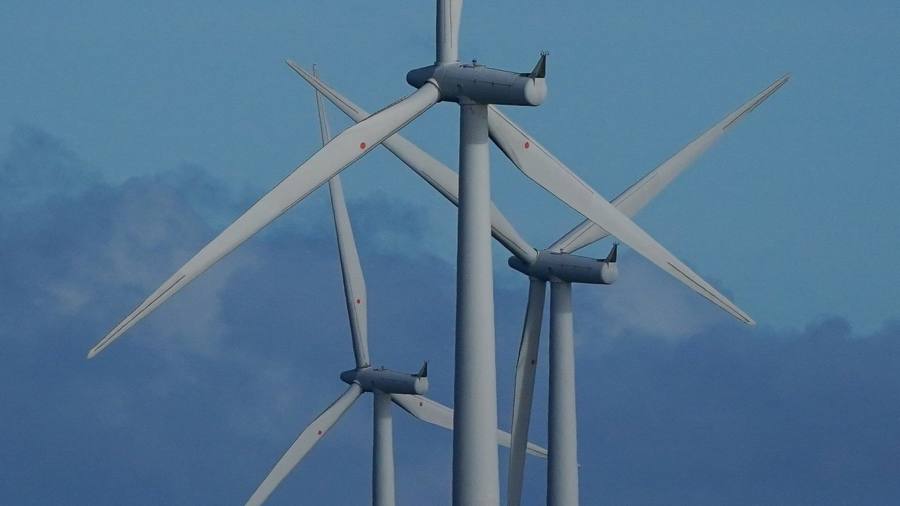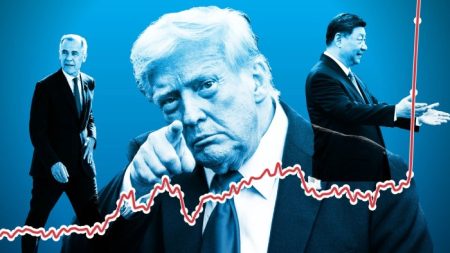With its high wind speeds and clear waters, the stretch of the North Sea off England’s east coast is among the most attractive in the world for wind farm developers.
Swedish developer Vattenfall spent years developing plans for almost 140 turbines across a 725km-squared patch, each one up to 350 metres high and with blades spanning up to 300 metres wide.
Last month, it stopped the project. Surging costs of everything from turbines to labour and financing rendered it unviable given the low price locked in for its electricity, the company said.
“It’s important to invest only when our return requirements are met,” said Anna Borg, Vattenfall’s chief executive. “With Norfolk Boreas [the offshore wind farm], that’s not the case any more.”
Vattenfall’s announcement not only highlights the challenges in the world’s second-largest offshore wind market in the North Sea, but also reflects the sector’s wider problems as the long-held assumption of falling costs goes into reverse.
It has cast a shadow over the pace of the sector’s growth, putting pressure on governments to respond.
“Offshore wind developers are not going to invest if project economics don’t work,” warned Rebecca Williams, head of offshore wind at the Global Wind Energy Council trade group.
“Governments need to ensure that their procurement frameworks allow a return on investment and adequately take into account external factors such as inflation if they want their markets to remain competitive.”
Offshore wind has grown rapidly over the past decade, helping to clean up energy supplies in markets such as the UK, where it supplies about 11 per cent of the country’s electricity. On a global basis it contributes a tiny 0.8 per cent of electricity. In all, there are now 64 gigawatts of offshore wind installed around the world, up from about 5GW in 2012.
That will need to grow to meet clean energy goals. In order to hit net zero goals and limit global warming, both the International Energy Agency and the International Renewable Energy Agency (Irena) estimate offshore wind capacity will need to exceed 2,000GW by 2050.
During its early days in the 2010s, the industry was characterised by falling costs as technology matured in an era of ultra-low interest rates.
A 60 per cent fall in the cost of energy for offshore wind between 2010 and 2021, according to Irena, helped it compete with fossil fuels and secured political support as governments try to keep costs down.
But geopolitical turmoil over the past few years has changed the dynamic, putting a strain on supply chains and increasing financing and turbine costs. Wind farm developments are particularly vulnerable to rising interest rates due to high upfront investments.
Vattenfall estimates the cost of building offshore wind farms has climbed 40 per cent this year.
The soaring costs have caught out project owners, including Vattenfall, Shell and Iberdrola, which had already agreed to sell electricity at low-fixed prices.
In the case of Vattenfall, it agreed in July last year to sell electricity from Norfolk Boreas at a fixed price of £37.35 per megawatt hour in 2012 prices. The contract price is index-linked to inflation, making it worth more than £45 per MWh today, well below the current wholesale price of about £78.
As costs started to rise, Vattenfall lobbied the government hard for tax breaks or other support to help it cope with rising costs — but it went unheeded.
Of the five projects agreed to build at that price in July 2022, only an East Anglian wind power project developed by Iberdrola-owned Scottish Power and EDPR and Engie’s Moray West project have been given the green light to go ahead with final investment decisions. Both projects were relatively advanced by July 2022 when costs started rising.
In the US, developer Avangrid, a subsidiary of Spanish energy giant Iberdrola, in July agreed to pay almost $50mn to get out of a supply contract covering a planned 1.2GW project in Massachusetts, blaming rising costs for the deal becoming no longer feasible.
It has also delayed a second project in Connecticut, while it tries to get better terms from the state.
In June, a project developed by Shell, EDP Renewables and Engie also applied to terminate power purchase agreements covering another planned 1.2GW project in Massachusetts, citing “unforeseen supply chain and financing costs affecting the whole offshore wind industry”.
Samantha Woodworth, senior research analyst covering the US wind industry at Wood Mackenzie, said many of the project owners were looking to renegotiate their power purchase agreements. “This is not really the rosy picture everyone was picturing a few months ago,” she said.
Ignacio Galán, Iberdrola’s chief executive, said last month he was “optimistic” the projects in Massachusetts and Connecticut would go ahead under different terms.
Shell’s Massachusetts wind project said it was in negotiations and “remains on track” to produce electricity by the end of the decade.
The need to meet clean energy goals means that there is no general lack of enthusiasm for offshore wind. UK energy supplier Octopus Energy’s generation arm last month announced plans to invest $20bn in the sector by 2030.
Zoisa North-Bond, head of the generation arm, said there is “tremendous opportunity in offshore wind . . . its power to deliver cheaper green electrons to customers over the next decade is going to be phenomenal”.
Borg at Vattenfall said its offshore wind business overall was “very valuable and profitable” despite the challenges at Norfolk Boreas, and it intended to remain one of the “leading companies in offshore wind in Europe today”.
But making the individual economics of a project stack up is a more complicated question, with projects dependent on the terms of any state support, seabed leases and long-term corporate power purchase agreements, in local markets.
Developers have warned that some newer auction rounds to build offshore wind farms or for project subsidies do not yet reflect the realities of their costs, meaning projects would struggle under those terms.
In the UK, trade groups have written to the government that its next round of subsidy contracts is not generous enough given rising costs. The subsidies and cost mismatch have affected an auction in Taiwan, where Orsted last October said it would not bid to take part in the latest phase of offshore wind projects. In March, the utility Rhode Island Energy cancelled an auction after receiving only one bid from Orsted and its partner Eversource Energy, which it considered too expensive.
Another auction model where bidders compete on their willingness to pay for the right to build wind farms rather than receiving subsidies may also put up barriers for developers unable to compete with the large sums offered by some new entrants in the wind power sector.
Germany last month secured commitments from BP and Total to pay €12.6bn to build and operate 7GW of new wind capacity across the North Sea and Baltic Sea. The format has attracted developers looking to strike a long-term power purchase deal with a corporate buyer at market rate rather than locking in a lower rate under subsidy.
BP’s boss Bernard Looney told The Times this week he might try to build two new large offshore wind farms in the Irish Sea without subsidies, using the power from its farms in its own operations.
The German bids have been welcomed as a sign of enthusiasm for the sector and is a boost for Berlin’s revenues, but critics fear it will squeeze out some of the traditional offshore wind developers and lead to higher future electricity as developers try to make their projects work despite such high costs.
The prices paid will “undoubtedly increase the price of electricity”, warned Stefan Thimm, managing director of German offshore wind association BWO, adding it “puts additional pressure on the value chain at a time when major investments need to be made”.
Wind turbine manufacturers have been struggling with wafer-thin margins as they have tried to meet demand from developers while keeping costs down. On Monday, Siemens Energy booked charges worth €2.2bn due to problems at its wind turbine division Siemens Gamesa. The company’s newest onshore wind turbines are suffering from technical problems, while its offshore wind business is also struggling with “increased product costs and ramp-up challenges”.
Mads Nipper, chief executive of Orsted, the world’s largest offshore wind developer, wrote on Twitter that Vattenfall’s decision to halt Norfolk Boreas was “courageous” and he hoped it would make “governments realise that offshore wind ambitions will only happen with sane auction frameworks and realistic prices”.
Speaking to the Financial Times in June, Nipper welcomed an auction in Ireland that secured 3GW of new offshore wind capacity at an average €86 per MWh, lower than expected but still higher than some of the prices in the UK.
Prices for long-term power purchase agreements have also risen globally, he added. “There is a realisation that something must yield,” he said.
Meanwhile, developers’ willingness to get out of unprofitable projects is a sign of discipline as the industry matures — but may slow down the pace of the rollout.
“We want to really substantiate the message that financial value creation is at the very core of our industry,” Nipper added. “For us that means that if we cannot get to a satisfactory value creation, we are prepared to walk away.”
Read the full article here














